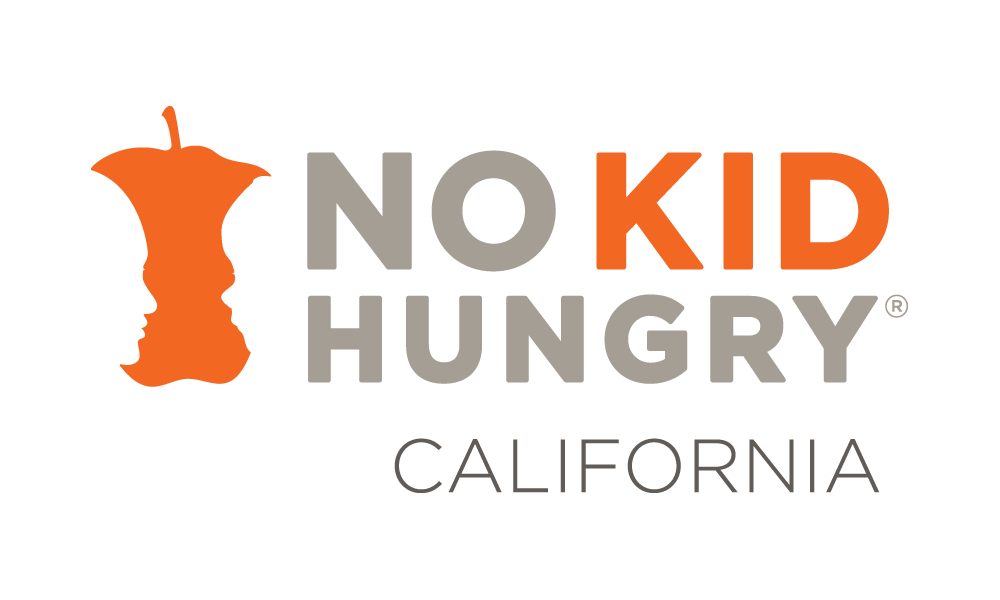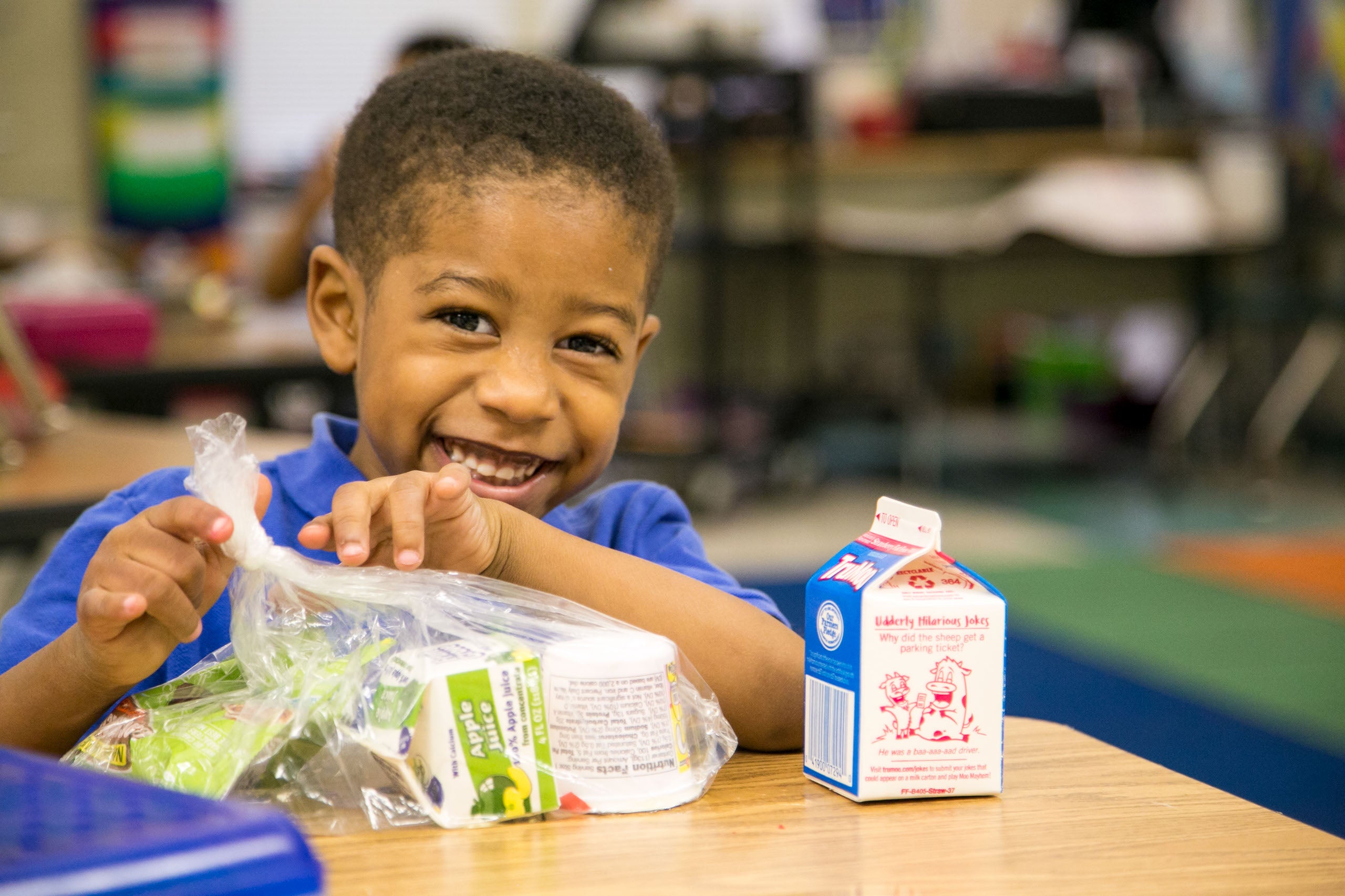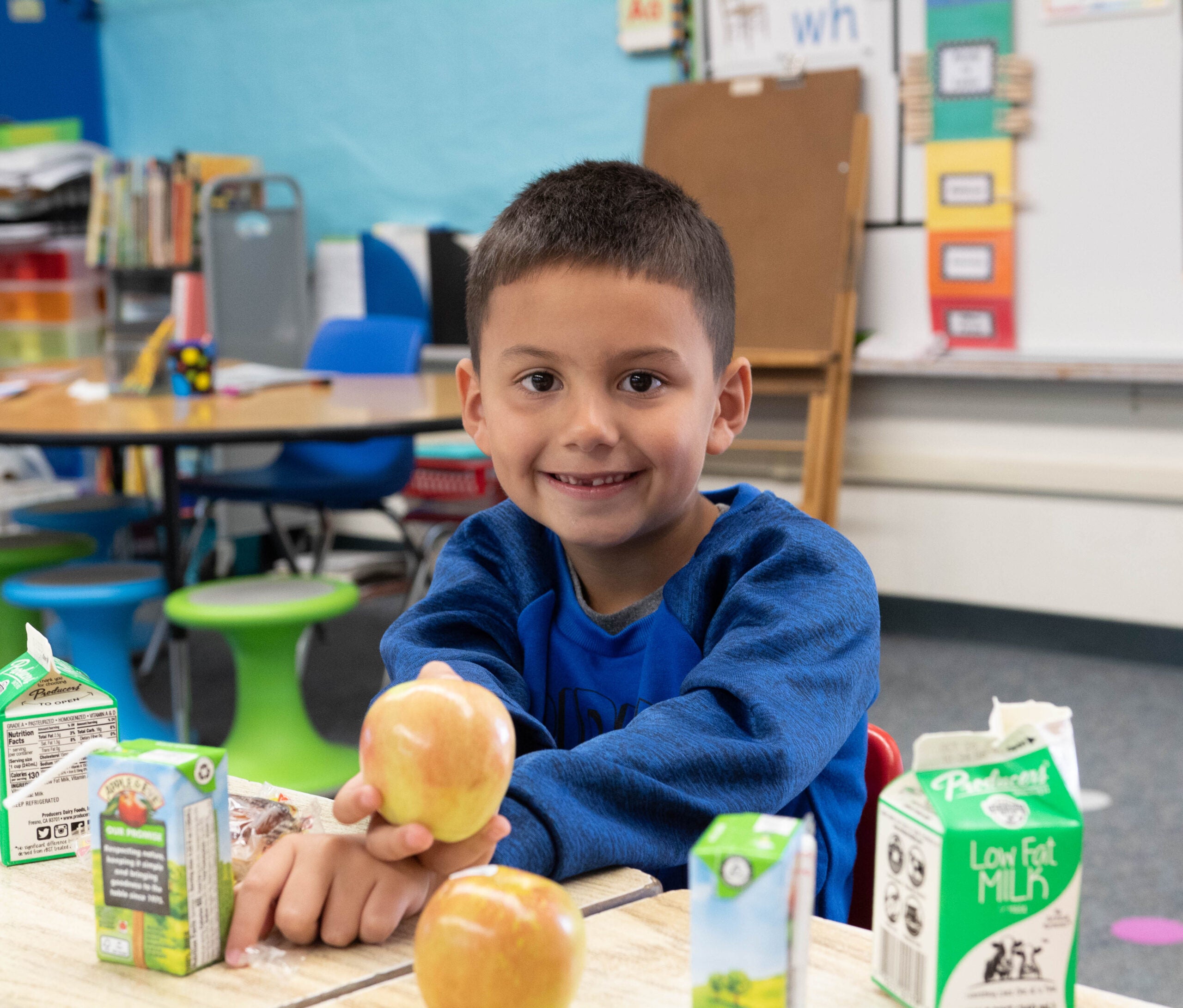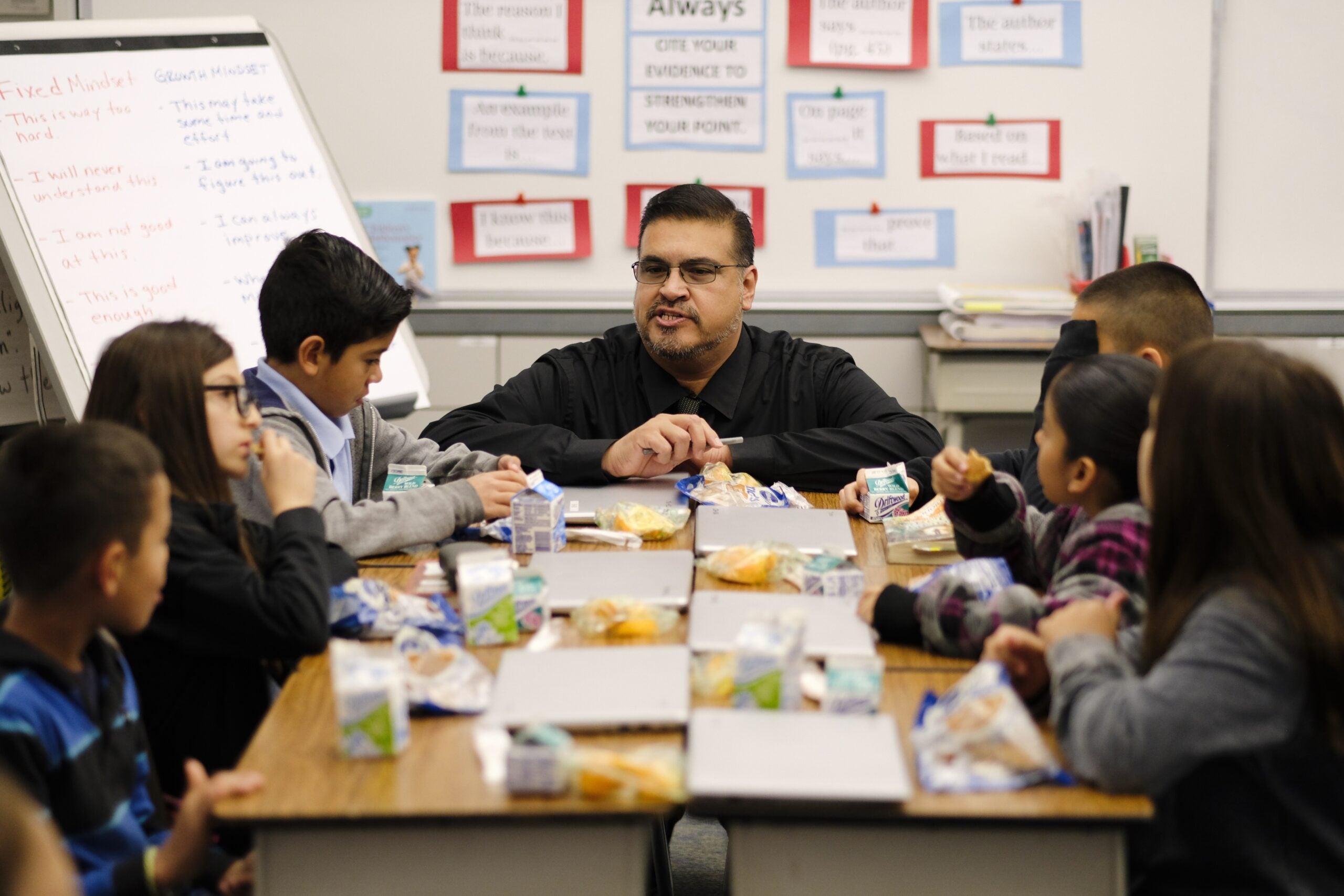No Kid Hungry Starts with Breakfast!
SAVE THE DATE: March 2-6, 2026 is National School Breakfast Week!
Kids do better when they start the day with a nutritious meal. Research shows that the simple act of eating school breakfast can change a child’s life. Making school breakfast a seamless part of the school day by serving it after the bell can also have a huge impact on classrooms. Here are some ways school breakfast benefits kids:
- Higher Test Scores: Hunger makes school harder. Students who eat school breakfast achieve higher scores on standardized tests.1
- Calmer Classrooms: Children who do not regularly get enough nutritious food to eat tend to have significantly higher levels of behavioral, emotional and educational problems.1
- School breakfast offered at no cost to all students may eliminate disparities and stigma between food-secure and food-insecure children in terms of eating breakfast at all.1
- Fewer Trips To The Nurse: When kids come to school hungry, they visit the school nurse more often due to stomachaches and headaches. Kids who struggle with hunger are also likely to be sick more often, slower to recover from illness, hospitalized more frequently and more susceptible to obesity.2
- Stronger Attendance & Graduation Rates: Students who eat school breakfast attend more school days. Chronic absenteeism, defined as missing three weeks or more of school, decreases by 6 percentage points on average when students have access to Breakfast After the Bell. Attendance is important, as students who attend class more regularly are 20 percent more likely to graduate from high school.3
Every time we feed a child, we unlock their ability to grow up and become the next teachers, scientists, and entrepreneurs. To learn more, the Study on Chronic Absenteeism and Breakfast After the Bell is research that shows the impact serving breakfast as part of the school day has on student outcomes.









